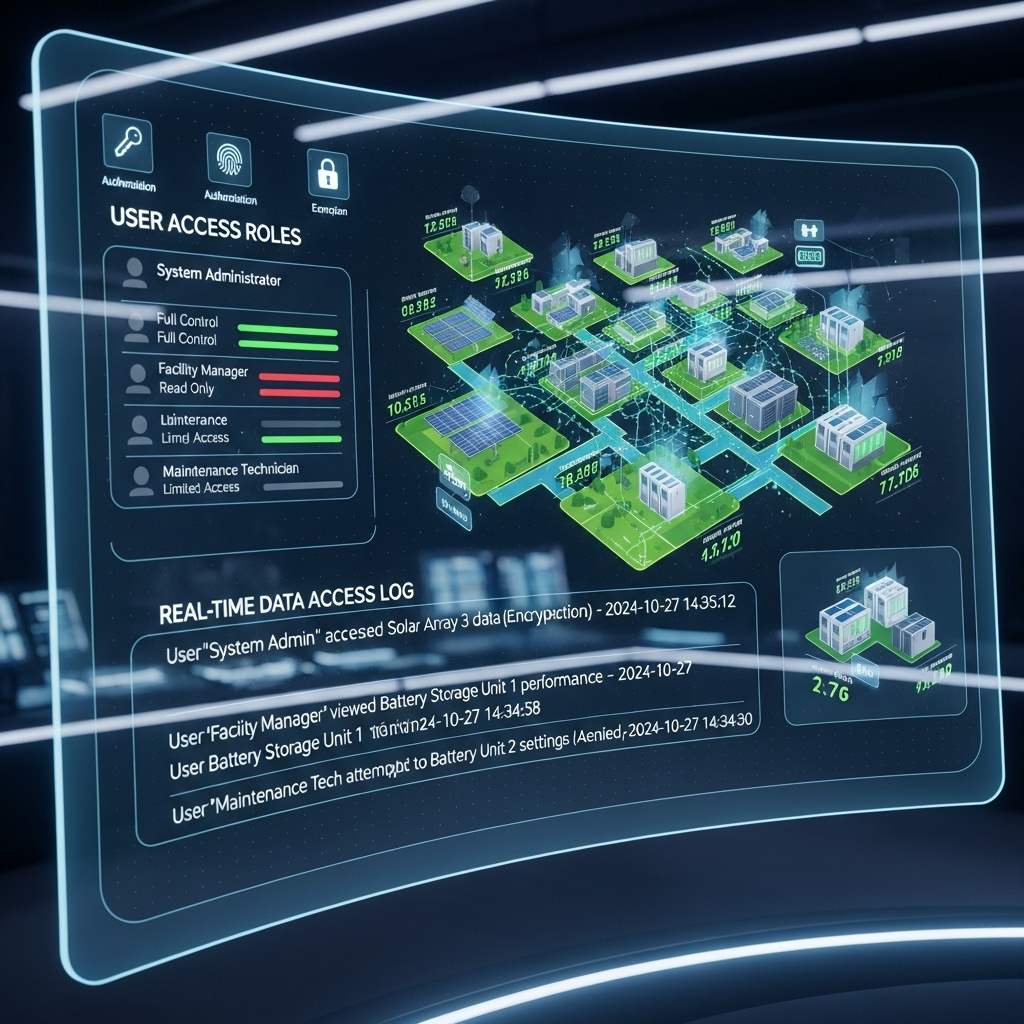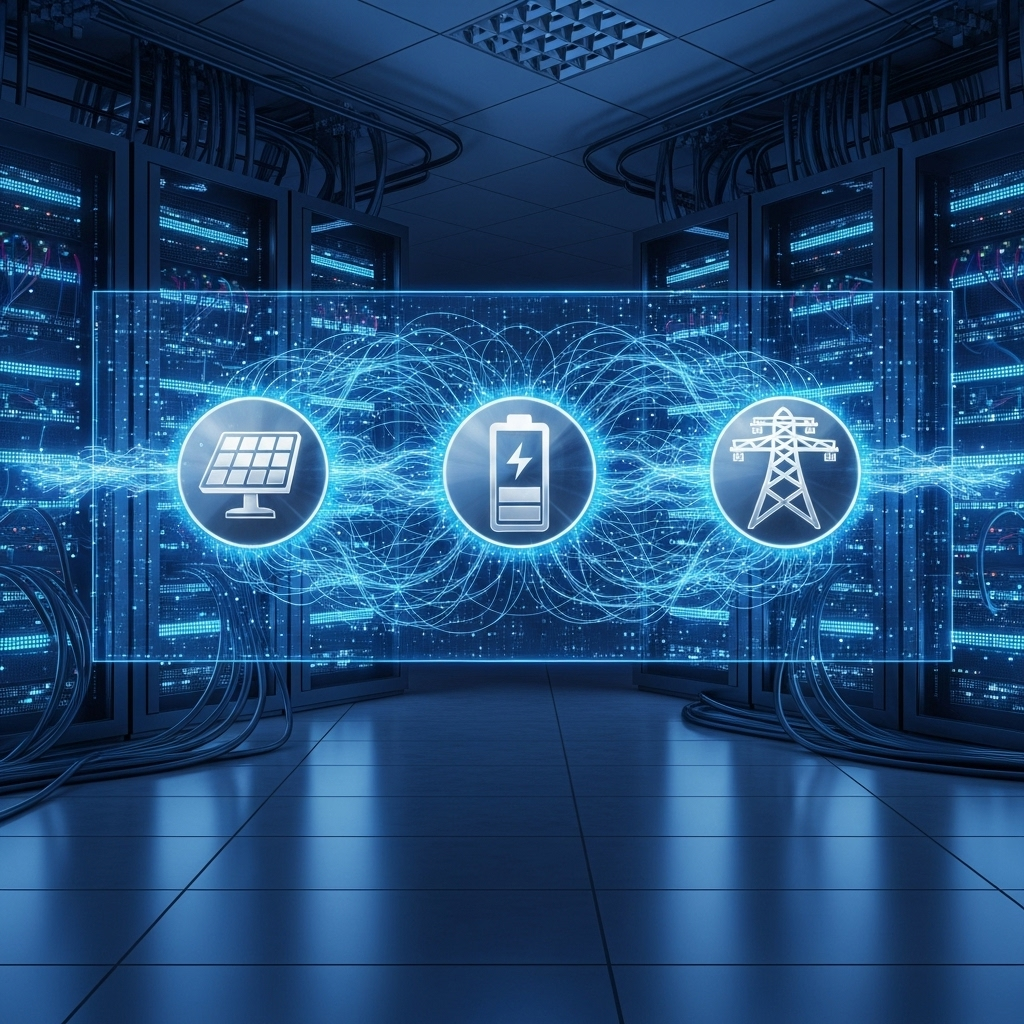The rapid expansion of Distributed Energy Resources (DERs), such as solar panels and battery storage, is transforming our energy landscape. This growth brings immense benefits but also introduces new vulnerabilities. As more devices connect to the grid, the potential attack surface for cyber threats expands, making robust grid-edge ESS and inverter security more critical than ever. The National Institute of Standards and Technology Cybersecurity Framework (NIST CSF) offers a comprehensive blueprint for managing and mitigating these risks effectively.
Understanding the Evolving Threat Landscape for DERs
As national DER capacity is projected to quadruple by 2025, a coordinated approach to cybersecurity is essential. Traditional, centralized security models are often inadequate for the distributed nature of modern energy systems. DERs, which are machines operating outdoors and often in remote locations, can be difficult to secure because they frequently connect to the grid via the internet, creating multiple points of potential compromise.
Why Grid-Edge Devices are Prime Targets
Grid-edge devices like inverters and energy storage systems are attractive targets for malicious actors. They are the control points for energy flow, and compromising them could lead to power disruptions, equipment damage, or grid instability. Their connectivity, while enabling smart grid functionality, also exposes them to threats ranging from simple brute-force attacks to sophisticated malware designed to disrupt operations.
The CIA Triad in Energy Storage Security
The core of information security revolves around the 'CIA Triad': Confidentiality, Integrity, and Availability. According to the report Grid Codes for Renewable Powered Systems, these principles are fundamental to cybersecurity.
- Confidentiality: This ensures that information is accessible only to authorized parties. A breach could expose sensitive operational data, which could be used to plan a larger attack.
- Integrity: This means that data is not modified during storage or transmission. If an attacker alters commands sent to an inverter, it could destabilize the local grid.
- Availability: This guarantees that authorized users can access information and systems when needed. A denial-of-service attack could make an ESS unavailable, impacting grid balancing and energy supply.
The NIST Cybersecurity Framework: A Practical Approach
The NIST CSF is not a rigid set of rules but a flexible and adaptable guide. It helps organizations structure their cybersecurity efforts around five core functions, creating a continuous cycle of improvement rather than a one-time checklist. This approach is vital as new security measures and potential attacks continue to be developed in a rapidly evolving field.
The Five Core Functions
The framework organizes cybersecurity activities into five key pillars:
- Identify: Develop an organizational understanding to manage cybersecurity risk to systems, assets, data, and capabilities.
- Protect: Implement appropriate safeguards to ensure the delivery of critical infrastructure services.
- Detect: Develop and implement activities to identify the occurrence of a cybersecurity event.
- Respond: Take action regarding a detected cybersecurity incident to contain its impact.
- Recover: Implement plans for resilience and to restore any capabilities or services that were impaired due to an incident.
Tailoring the NIST CSF for ESS and Inverters
Applying the NIST CSF to grid-edge ESS and inverter security involves tailoring these functions to the specific context of DERs. This means identifying unique vulnerabilities in communication protocols, protecting hardware from physical tampering, and developing response plans for incidents that could affect grid stability. As highlighted by the European Commission, a methodical, sector-based line of cybersecurity defense is necessary for the energy system.
Key Security Controls for Inverters and Energy Storage Systems
A multi-layered security strategy is the most effective way to protect DERs. This involves implementing a range of technical and procedural controls to address various threat vectors.
Foundational Protective Measures
Several cybersecure functionalities are crucial for securing grid-edge devices. These include:
- Authentication: This ensures the identity of personnel and systems, enforcing different privilege levels for accessing DER monitoring and control systems.
- Encryption: Using protocols like Transport Layer Security (TLS) ensures data confidentiality and integrity, protecting against eavesdropping and man-in-the-middle attacks.
- Certificate Management: Implementing certificate revocation lists helps prevent the use of expired or compromised credentials for network authentication.
- Physical Security: Protecting hardware from malicious physical actions and unauthorized access is a fundamental first line of defense.
- Secure Firmware Updates: The ability to perform firmware 'rollbacks' helps systems recover from malware embedded in software updates pushed out by manufacturers.
Advanced Defense with Zero Trust Architecture
A Zero Trust Architecture represents a paradigm shift in cybersecurity. It operates on the principle of 'never trust, always verify,' assuming that the network is potentially compromised and requires protection when absorbing information. The U.S. Department of Energy has called this approach a 'game-changing' technology. As described in an EERE Success Story on energy networking, this model connects to existing utility platforms to control access and improve cybersecurity by assuming no implicit trust.
Real-World Applications and Collaborative Efforts
The theoretical principles of the NIST CSF are being put into practice through innovative projects and collaborative efforts across the energy sector. These initiatives demonstrate how to build secure and resilient microgrids and DER networks.
Multi-Layered Defense Systems in Action
One project supported by the U.S. Department of Energy developed a three-layer energy management system for microgrids. The first layer provides situational awareness, the second allows DERs to cooperate without central control, and the third enables autonomous system restoration using grid-forming inverters. This system can detect and identify the location of cyberattacks before they impact the system, as detailed in a Success Story on using renewable microgrids.
The Intersection of Performance and Security
While implementing robust security, it is crucial not to overlook the core function of these systems: efficient and reliable energy delivery. Optimizing system efficiency and longevity is paramount. A deep understanding of key metrics, as detailed in this ultimate reference for solar storage performance, ensures that your secure system is also a high-performing one. Balancing security protocols with performance requirements is key to a successful DER deployment.
Standardization and Information Sharing
National laboratories are working with standards development organizations to create general DER cybersecurity policies. In the United States, the NIST Framework and Roadmap for Smart Grid Interoperability Standards outlines the landscape for smart grid interoperability, including crucial standards for cybersecurity. This collaborative effort is vital for creating a unified and secure energy future.
Moving Forward: Building a Resilient Grid Edge
Securing the grid edge is not a one-time task but an ongoing commitment. The NIST CSF provides a powerful and flexible tool for organizations to build and maintain a strong cybersecurity posture. By adopting a proactive approach that combines foundational controls, advanced architectures like Zero Trust, and collaborative innovation, we can build a resilient, reliable, and secure energy grid for the future.
Disclaimer: This article provides general information and does not constitute legal or investment advice. Always consult with a qualified professional for guidance on specific cybersecurity implementations and investments.
Frequently Asked Questions
What is the NIST Cybersecurity Framework?
The NIST Cybersecurity Framework (CSF) is a set of voluntary guidelines, standards, and best practices to help organizations manage and reduce cybersecurity risk. It is designed to be flexible and adaptable to different sectors, including the energy industry, providing a structured approach to protecting critical infrastructure.
Why is inverter security so important for the grid?
Inverters are the brains of a solar and storage system, converting DC power to AC power and managing the flow of energy to the grid. If an inverter's security is compromised, an attacker could potentially manipulate energy flow, disrupt grid operations, cause physical damage to equipment, or create widespread power outages.
What is the 'CIA Triad' in cybersecurity?
The CIA Triad refers to three core principles of information security: Confidentiality (restricting access to authorized users), Integrity (ensuring data is accurate and trustworthy), and Availability (ensuring systems and data are accessible when needed). A robust cybersecurity strategy must address all three components.
How does Zero Trust Architecture apply to DERs?
In a Zero Trust Architecture for DERs, no device or user is trusted by default, whether inside or outside the network. Every access request is strictly verified before granting access. This is crucial for DERs, which are often in remote, physically unsecured locations and connect over public networks, as it minimizes the potential for unauthorized access and lateral movement by attackers.





Leave a comment
All comments are moderated before being published.
This site is protected by hCaptcha and the hCaptcha Privacy Policy and Terms of Service apply.